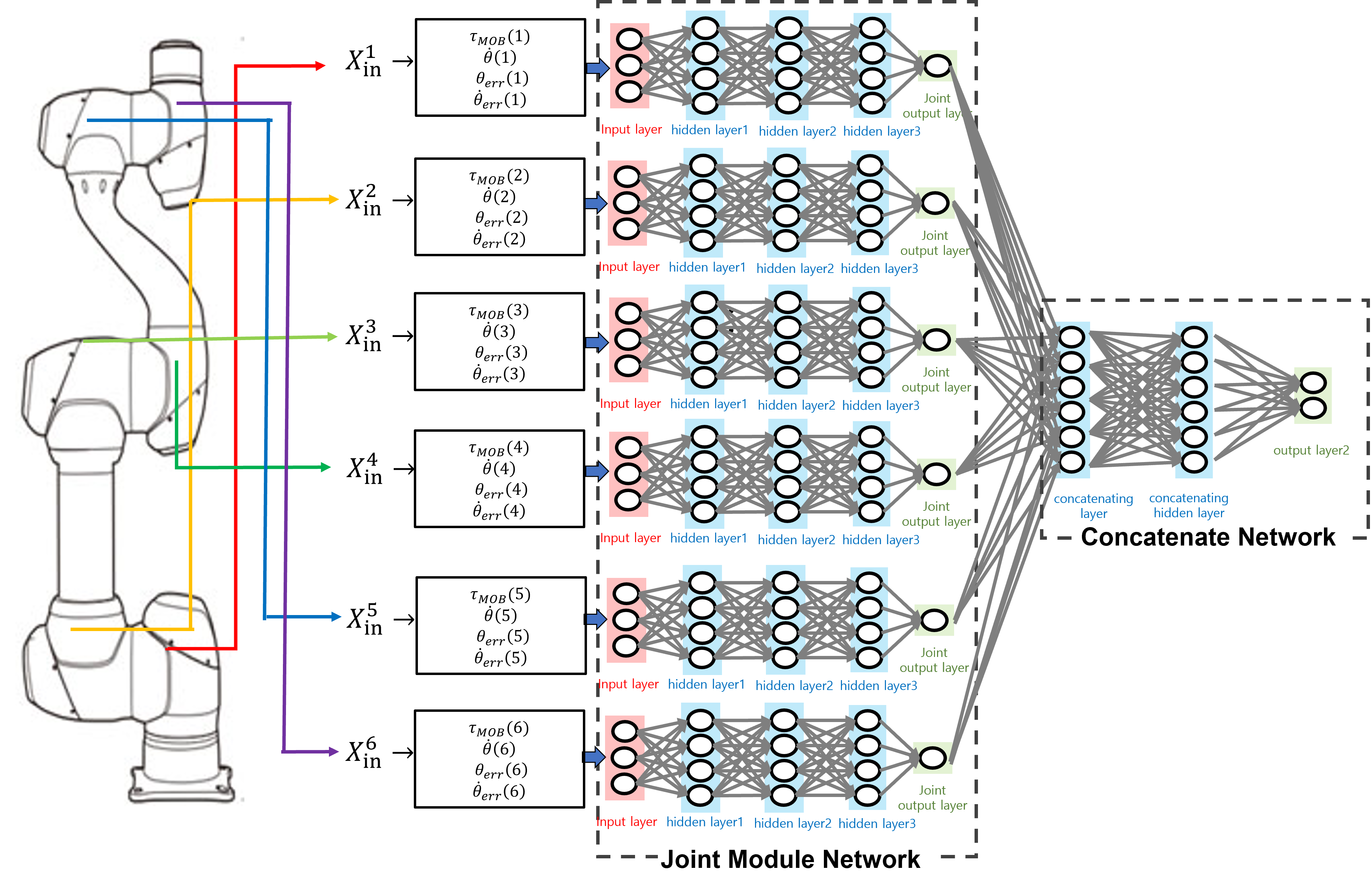Abstract
As human-robot collaboration increases and robots are applied to everyday life, interest in safety issues is increasing. To be safely used in real life, in addition to collision prevention algorithms, robots need to quickly detect unexpected collisions and take appropriate actions. Recently, deep learning-based collision detection algorithms have been proposed to overcome the limitations of model-based collision detection methods, but there are also limitations on deep learning methods, especially in data collection. The collected data are often insufficient because collecting collision data is laborious and intrinsically imbalanced, meaning that the collision data are much smaller than the free-motion data. Moreover, since collecting collision data is risky and might cause potential damage to the robot, applying the deep learning method to a new target robot on mass production is highly restricted. Therefore, in this article, an inductive bias is imposed on network structure and input variable to be sample-efficiently trained, which is suitable for insufficient imbalanced data. The proposed modularized neural network removes the connection between other joints at the front part of the network, reducing the search space of the learnable parameter. Moreover, the input variable is selected to take both dynamics features and error-related features into account. Consequently, the proposed method is versatile, showing successful generalization performance to random motion, random collision location, and various loads at the end-effector. Furthermore, to circumvent the limitations of applying deep learning methods to mass production, transfer learning is proposed, which does not require any collision data from the target robot. The proposed data-mixture method and collision ratio adjustment method for fine-tuning are validated with two source robots and one target robot. The transferred network is effective to be applied on mass production without losing performance compared to a specific-robot-trained network(a network trained with specific robot data and applied to the same robot).

